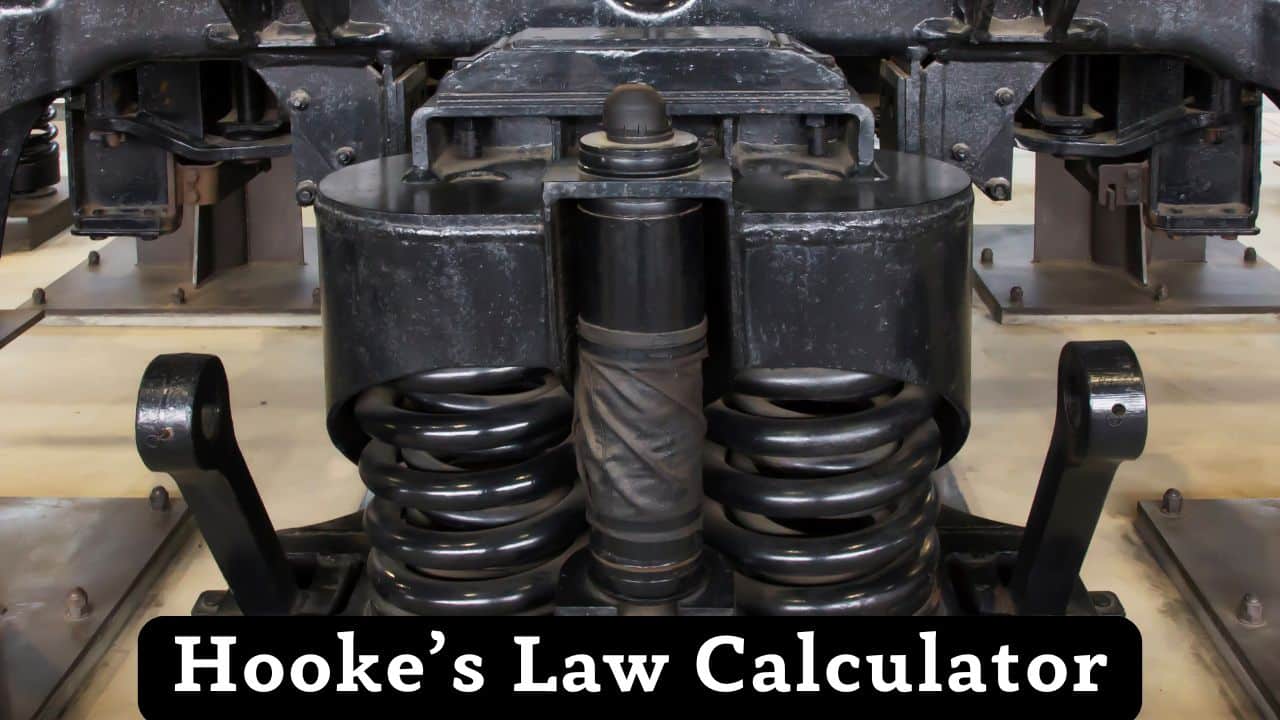
Hooke’s Law and Elastic Behavior
Master the fundamental principles of elasticity and spring mechanics!
What is Hooke’s Law and Why is it Important?
Hooke’s Law is a fundamental principle in physics that describes the elastic behavior of materials. It states that the force needed to extend or compress a spring by some distance is proportional to that distance. This law is crucial for understanding mechanical systems, structural engineering, and material science.
Why Hooke’s Law matters: This principle governs the behavior of elastic materials and is essential for designing springs, shock absorbers, building structures, and understanding material properties. It’s fundamental to mechanical engineering, physics, and materials science. Learn more about Hooke’s law and its applications in engineering and physics.
Types of Elastic Calculations:
- Basic Spring Force: F = kx relationship for linear springs
- Spring Constant: Material stiffness and resistance to deformation
- Elastic Energy: Energy stored in deformed elastic materials
- Spring Systems: Series and parallel spring combinations
- Harmonic Motion: Oscillatory behavior of spring-mass systems
- Stress-Strain: Material behavior under applied loads
Fundamental Principles of Hooke’s Law
Hooke’s Law establishes the linear relationship between force and displacement in elastic materials. The law applies within the elastic limit of materials, where deformation is reversible and proportional to applied force.
Core Hooke’s Law Equations:
Complete Spring Force:
Fs = -kx
Force with direction (negative = restoring force)
Elastic Potential Energy:
U = ½kx²
Energy stored in compressed or extended spring
Spring Constant:
k = F/x
Stiffness of spring material
Period of Oscillation:
T = 2π√(m/k)
Time for one complete oscillation
Series Springs:
1/k_eq = 1/k₁ + 1/k₂ + 1/k₃
Equivalent spring constant for series arrangement
Parallel Springs:
k_eq = k₁ + k₂ + k₃
Equivalent spring constant for parallel arrangement
Understanding the Negative Sign:
Fs = -kx vs |F| = kx
Complete formula includes direction; magnitude is always positive
Key Physics Principles:
- Complete Formula: Fs = -kx (negative sign shows direction)
- Force Magnitude: |F| = kx (always positive value)
- Restoring Nature: Force always opposes displacement from equilibrium
- Vector vs Scalar: -kx is vector form, kx is magnitude
- Elastic Limit: Law applies only within material’s elastic range
- Energy Conservation: Work done equals elastic potential energy stored
Spring Systems and Combinations
Spring systems often involve multiple springs working together in series or parallel arrangements. Understanding these combinations is essential for mechanical design and system analysis.
Spring System Characteristics:
| Configuration | Equivalent Spring Constant | Force Distribution | Displacement | Applications |
|---|---|---|---|---|
| Single Spring | k | F = kx | x = F/k | Basic spring mechanisms |
| Series Springs | 1/k_eq = Σ(1/k_i) | Same force on all | x_total = Σx_i | Shock absorbers, compliance |
| Parallel Springs | k_eq = Σk_i | F_total = ΣF_i | Same displacement | Load distribution, stiffness |
| Torsional Springs | τ = κθ | Torque vs angle | Angular displacement | Rotational mechanisms |
Material Properties and Stress-Strain Relationships
Stress-strain analysis extends Hooke’s Law to general material behavior. The relationship between stress (force per unit area) and strain (relative deformation) characterizes material properties.
Common Material Properties:
| Material | Young’s Modulus (GPa) | Yield Strength (MPa) | Ultimate Strength (MPa) | Applications |
|---|---|---|---|---|
| Steel (mild) | 200 | 250 | 400 | Construction, machinery |
| Aluminum | 70 | 95 | 185 | Aerospace, automotive |
| Copper | 110 | 70 | 220 | Electrical, plumbing |
| Rubber | 0.01-0.1 | 10-25 | 15-30 | Seals, shock absorption |
| Glass | 70 | 50 | 50 | Windows, optics |
| Concrete | 30 | 3-5 | 3-5 | Construction, foundations |
Practice Problems and Worked Solutions
Problem 1: Basic Spring Force
Question: A spring with constant k = 500 N/m is compressed by 0.1 m. Calculate the restoring force.
Click to see detailed solution
Given: k = 500 N/m, x = 0.1 m
Formula: F = kx
Calculation: F = 500 × 0.1 = 50 N
Answer: The restoring force is 50 N (opposing compression)
Problem 2: Spring Constant Determination
Question: A 20 N force stretches a spring by 4 cm. What is the spring constant?
Click to see detailed solution
Given: F = 20 N, x = 4 cm = 0.04 m
Formula: k = F/x
Calculation: k = 20/0.04 = 500 N/m
Answer: The spring constant is 500 N/m
Problem 3: Elastic Potential Energy
Question: Calculate the elastic potential energy stored in a spring (k = 800 N/m) compressed by 0.05 m.
Click to see detailed solution
Given: k = 800 N/m, x = 0.05 m
Formula: U = ½kx²
Calculation: U = ½ × 800 × (0.05)² = ½ × 800 × 0.0025 = 1 J
Answer: The elastic potential energy is 1 J
Problem 4: Springs in Series
Question: Two springs (k₁ = 300 N/m, k₂ = 600 N/m) are connected in series. Find the equivalent spring constant.
Click to see detailed solution
Given: k₁ = 300 N/m, k₂ = 600 N/m
Formula: 1/k_eq = 1/k₁ + 1/k₂
Calculation: 1/k_eq = 1/300 + 1/600 = 2/600 + 1/600 = 3/600 = 1/200
Answer: k_eq = 200 N/m (softer than either individual spring)
Problem 5: Simple Harmonic Motion
Question: A 2 kg mass attached to a spring (k = 800 N/m) oscillates. Find the period of oscillation.
Click to see detailed solution
Given: m = 2 kg, k = 800 N/m
Formula: T = 2π√(m/k)
Calculation: T = 2π√(2/800) = 2π√(0.0025) = 2π × 0.05 = 0.314 s
Answer: The period of oscillation is 0.314 seconds
